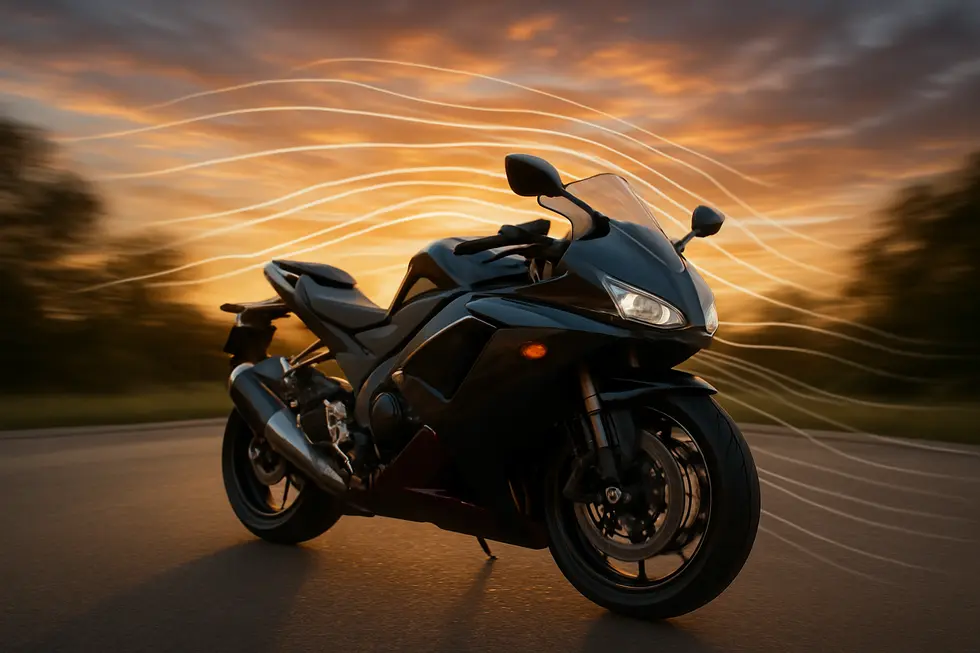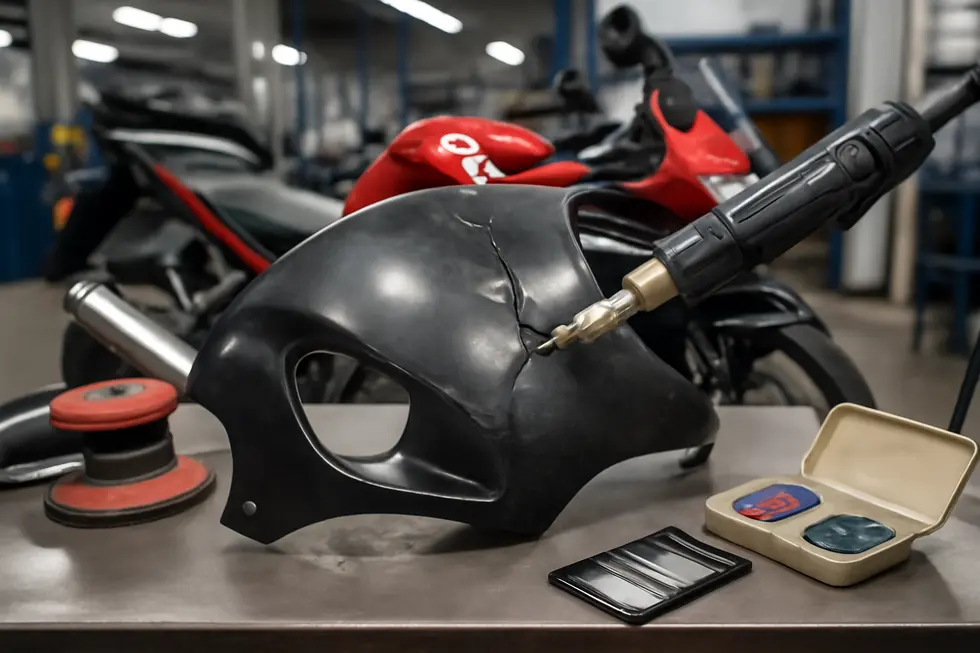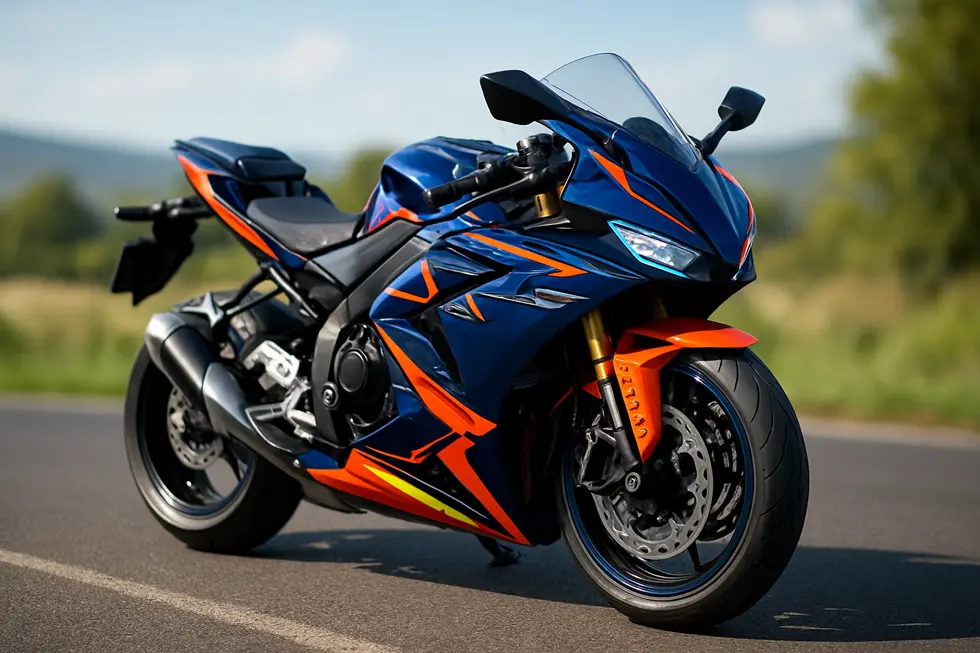Mastering Motorcycle Fairing Design: A Strategic Guide for Business Owners
October 6, 2025 | by summitfairings
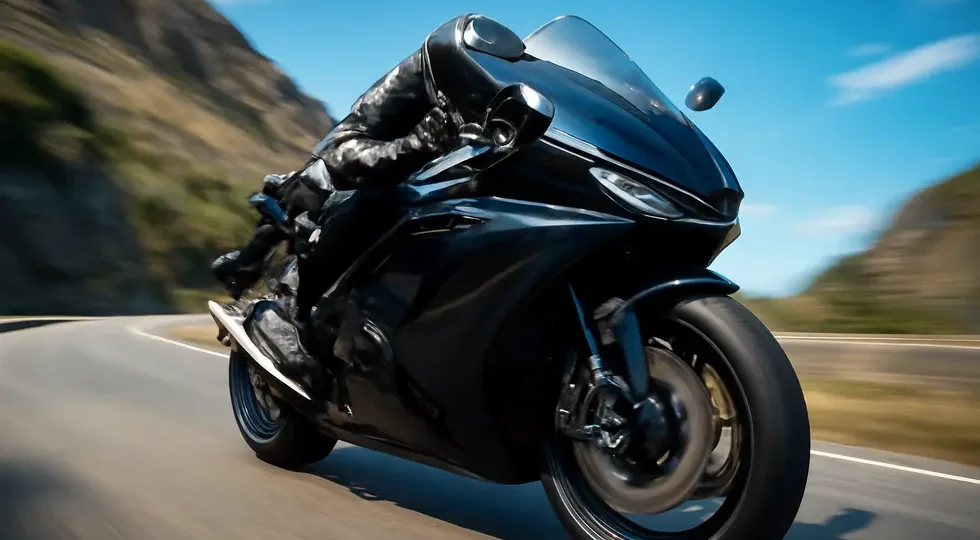
Introduction
Motorcycle fairing design is a crucial element for businesses aiming to lead in the motorcycle accessories market. These aerodynamic, lightweight panels do more than just enhance a bike’s appearance—they significantly improve performance, stability, and rider protection. For business owners, understanding the core principles behind fairing design helps in making informed decisions about product development, sourcing, and customization offerings. This guide delves into the essential factors shaping motorcycle fairings, from optimizing aerodynamics to mastering material selection, ensuring a precise fit, and exploring customization options that appeal to diverse rider preferences. Each chapter builds a comprehensive understanding that empowers businesses to deliver exceptional value in competitive markets.
Tables of Contents
Chapter 1: Aerodynamics in Motorcycle Fairing Design
- Optimizing Drag Reduction and Airflow Control for Enhanced Motorcycle Performance
- Harnessing Downforce and Ground Effect: Enhancing Stability Through Advanced Fairing Aerodynamics
Chapter 2: Material Selection in Motorcycle Fairing Design
- Balancing Performance and Durability: Technological Dynamics of Fairing Materials
- The Economic and Societal Dimensions of Material Choices in Fairing Engineering
Chapter 3: Customization Options in Motorcycle Fairing Design
- Crafting Performance and Style: Material and Finish Choices in Motorcycle Fairings
- Tailoring Brand Identity and Functionality: The Seamless Fusion in Motorcycle Fairing Customization
Chapter 4: Fit and Functionality Considerations in Motorcycle Fairing Design
- Integrating Aerodynamics and Rider-Centered Fit for Peak Performance and Safety
- Harmonizing Material, Construction, and Aesthetic Integration for Optimal Fairing Performance
Chapter 5: Exploring the Diverse Technological Foundations of Motorcycle Fairing Variants
- Innovations and Material Science Driving the Broad Spectrum of Motorcycle Fairing Designs
- The Economic and Societal Dimensions Shaping Motorcycle Fairing Variants
Chapter 1: Aerodynamics in Motorcycle Fairing Design
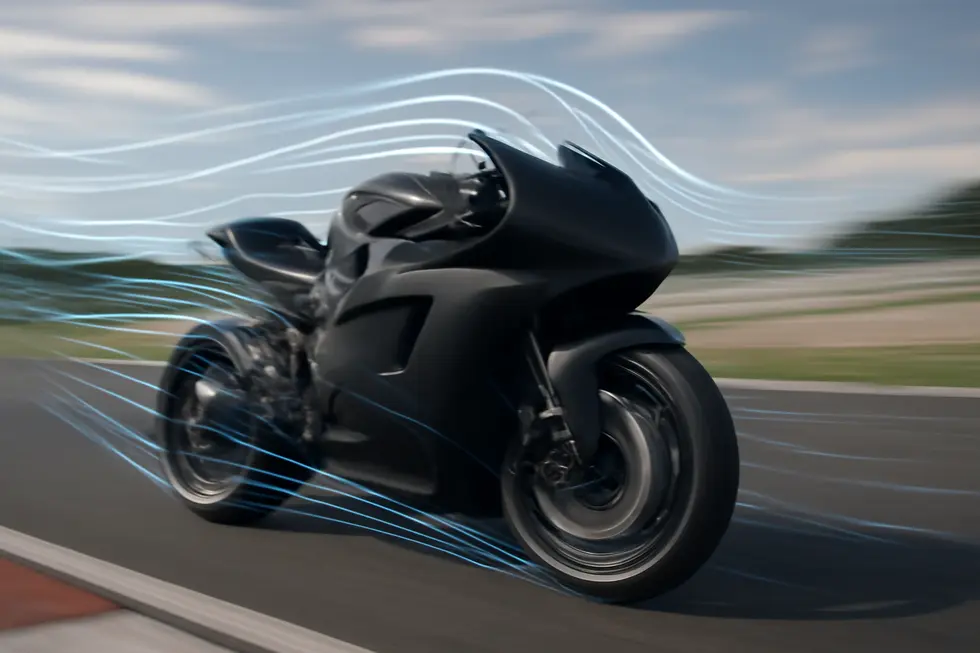
1. Optimizing Drag Reduction and Airflow Control for Enhanced Motorcycle Performance
Optimizing Drag Reduction and Airflow Control for Enhanced Motorcycle Performance
Motorcycle fairing design plays a pivotal role in minimizing aerodynamic drag while expertly managing airflow around the vehicle. This balance directly impacts speed, fuel efficiency, and rider stability. Fairings envelop the motorcycle’s frame and engine, creating a seamless surface that channels air smoothly over the bike’s contours rather than allowing disruptive turbulence. By reducing turbulent airflow and drag forces, the bike requires less horsepower to maintain high speeds, a crucial advantage especially when pushing performance boundaries near 200 mph.
Designers carefully refine fairing shapes and angles to meet two sometimes competing goals: drag reduction and aerodynamic stability. For instance, while features such as Gurney lips or diverter skirts may introduce slight aerodynamic drag, they counteract lifting forces, helping the motorcycle maintain better ground contact. This trade-off enhances handling and rider safety during aggressive acceleration or cornering at speed.
Additional airflow management elements—like winglets, inlets, and outlets—are integrated into fairings to regulate cooling, downforce, and turbulence. Advanced solutions, such as biplane winglets or strategically positioned hot-air vents, improve tire grip and prevent overheating, all without compromising the motorcycle’s streamlined efficiency.
The rider’s position complements these refinements by reducing the frontal area exposed to wind resistance. Sportbike riders adopt a crouched stance, aligning with the fairing’s aerodynamic profile to further decrease drag and improve overall control.
Material innovations and rapid prototyping methods enable iterative enhancements to these aerodynamic features. Lightweight composites, such as carbon fiber blends, maintain structural strength while allowing designers to fine-tune forms that optimize airflow and reduce weight simultaneously, thereby preserving agility.
This intricate interplay among fairing shape, aerodynamic appendages, rider posture, and material technology culminates in motorcycles that not only slice through air more effectively but also maintain stability and rider comfort. Electric sportbikes particularly benefit, as efficient drag management directly extends battery range by reducing power consumption caused by air resistance.
For those interested in exploring a wide array of options in motorcycle bodywork that combine style and aerodynamic function, detailed resources are available here.
Through precise drag reduction and airflow control, motorcycle fairing design significantly elevates performance, ensuring every ride is faster, safer, and more efficient.
2. Harnessing Downforce and Ground Effect: Enhancing Stability Through Advanced Fairing Aerodynamics
Downforce generation and ground effect aerodynamics are critical advancements in motorcycle fairing design that directly enhance high-speed stability and cornering performance. Unlike simply reducing drag, these aerodynamic principles actively push the motorcycle downward, increasing tire contact with the road and thereby improving grip and handling precision. Integrating wings, spoilers, and carefully sculpted sidepods into fairings allows designers to manipulate airflow to create this downward force without excessively increasing drag.
A prime example of downforce application is the use of aerodynamic wings positioned near the front axle. These elements create additional weight pressing the front tire against the pavement, substantially reducing wheel lift during rapid acceleration or hard braking. This effect not only improves directional control but also minimizes the risk of front-end instability. Elaborate spoiler systems, inspired by racing technologies, add subtle yet effective downforce while maintaining airflow efficiency.
Ground effect aerodynamics complements these elements by exploiting the pressure differential created between the motorcycle’s underside and the road surface. When the bike is leaned into a corner, specialized fairing shapes reduce air pressure beneath the bike, generating a suction-like force that pulls it closer to the ground. This intensifies tire grip dramatically, allowing sharper cornering lines and greater rider confidence. The increased vertical load on tires, sometimes multiplying forces up to fivefold on straights and tripling during lean, enhances cornering stability without compromising maneuverability.
Advanced fairing designs incorporate carbon fiber winglets and underbody contours that channel airflow strategically. Additionally, integrating hot-air exhaust outlets aids in thermal management while maintaining aerodynamic balance. These features collectively optimize downforce generation while keeping drag manageable, a key balance for high-performance motorcycles. The continuous evolution of race-inspired aerodynamic solutions has increasingly influenced production fairings, bringing enhanced performance and safety to consumer bikes.
For enthusiasts interested in fairing customization and technical refinements that boost aerodynamic performance, exploring a comprehensive selection of motorcycle fairings can provide both aesthetic and functional upgrades. Such options help riders embrace these aerodynamic advantages tailored to their specific motorcycle models and riding styles. For more insights, visit Explore the Best Motorcycle Fairings at Summit Fairings.
Chapter 2: Material Selection in Motorcycle Fairing Design
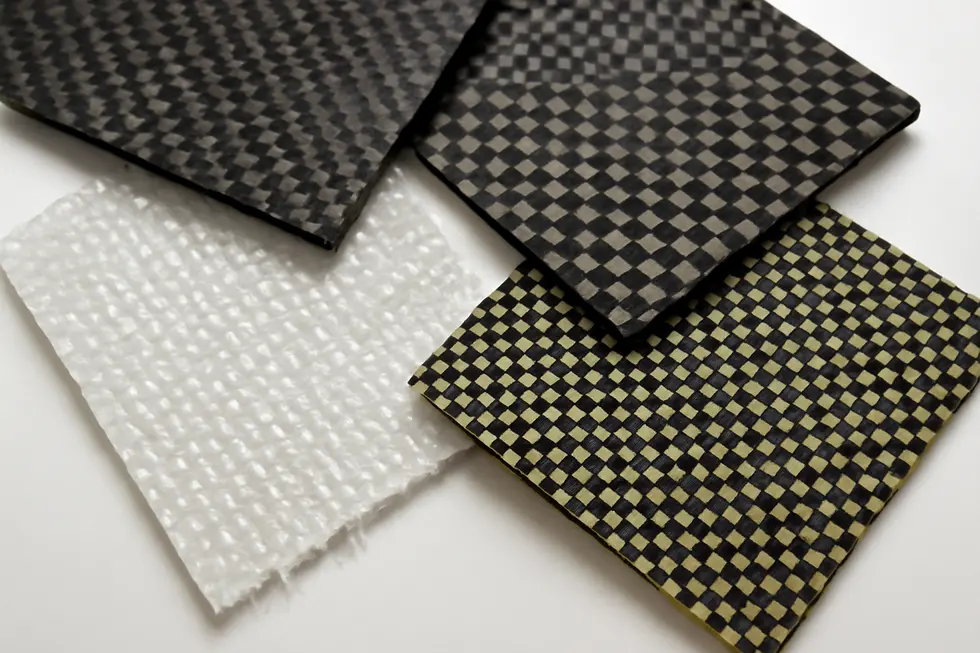
1. Balancing Performance and Durability: Technological Dynamics of Fairing Materials
Balancing Performance and Durability: Technological Dynamics of Fairing Materials
Choosing the right materials for motorcycle fairings is a nuanced process that merges engineering precision with practical demands. The selected materials must be lightweight to enhance maneuverability and speed, yet tough enough to endure impacts from road debris, vibrations, and environmental exposure. This balance ensures not only optimal performance but also rider protection and long-term durability. Aerodynamics is a fundamental driver—materials need to be formed into shapes that reduce drag while maintaining structural integrity even under shifting air pressures at high speeds.
The technological palette includes thermoplastics like ABS and polypropylene, alongside composite materials such as fiberglass, carbon fiber, and Kevlar blends. ABS plastic offers cost-efficiency and repair ease, making it suitable for mass-produced fairings, though it sacrifices some weight advantages. Fiberglass strikes a middle ground with decent strength-to-weight ratios and relative affordability. Carbon fiber composites stand out for their exceptional stiffness and minimal weight, attributes highly prized in racing, albeit accompanied by greater manufacturing complexity and cost.
Chemical and physical compatibility further influences material decisions. For instance, the choice of adhesives must carefully match the fairing’s substrate to prevent weakening or damage. Epoxy-based adhesives are widely favored for bonding composite panels due to their strong, weather-resistant properties. They also accommodate thermal expansion differences, preserving joint integrity despite the constant flexing and vibration motorcycles encounter.
Manufacturing techniques are tightly linked to material choice. Thermoplastics lend themselves to injection molding, enabling rapid, cost-effective production with consistent quality. In contrast, composites demand specialized layup or prepreg methods that allow for custom shapes and finishes but require skilled labor and longer cycles. Repairability is often inversely proportional to performance—the ease of fixing thermoplastic panels through heat welding contrasts with the more specialized and involved processes required for composite materials.
While technical factors dominate most designs, cultural and aesthetic influences sometimes take precedence. Unique styles, like those in certain motorcycle subcultures, might prioritize bold visual statements over aerodynamic refinement, embracing oversized or intricately shaped fairings crafted from varied materials. Still, mainstream practice consistently seeks material choices that harmonize strength, lightweight performance, manufacturability, and longevity.
This intricate matrix of technological considerations guides manufacturers and custom fabricators alike to develop fairings that not only fit precisely but also maximize their contribution to the motorcycle’s overall dynamic performance and rider experience. For those exploring affordable yet technologically sound options, discovering choices in motorcycle fairings at Summit Fairings offers valuable insights into how these materials come to life in practical applications.
2. The Economic and Societal Dimensions of Material Choices in Fairing Engineering
Material selection in motorcycle fairing design extends beyond technical specs and aesthetics, deeply influencing economic outcomes and societal values. Economically, the choice of material directly impacts manufacturing costs, maintenance, and long-term value. For instance, thermoplastics like ABS are favored for their balance of affordability, durability, and ease of repair. This reparability is crucial, as efficient repair processes using water-based, eco-friendly adhesives not only save costs but prolong the life of fairings, reducing the frequency of replacements. Conversely, advanced composites such as carbon fiber carry higher upfront costs but offer weight reductions that enhance fuel efficiency and handling. These performance gains can translate into long-term economic benefits by lowering operational expenses and improving resale value through the premium image associated with exclusive materials.
On a societal level, material choices reflect growing environmental awareness and safety priorities within the motorcycle community. The integration of bio-based composites and recyclable materials in fairing manufacture aligns with global sustainability trends, emphasizing reduced carbon footprints and support for circular economy principles. Such innovations satisfy consumer demand for greener products while encouraging responsible manufacturing practices. Additionally, strong, UV-resistant materials contribute to rider safety by ensuring that body panels maintain integrity under various environmental stresses, protecting vital components and the rider. Lightweight, aerodynamic fairings foster superior rider comfort and control, which can influence usage patterns, encouraging motorcycles for commuting and leisure. Widespread adoption of such efficient, sustainable fairings holds the potential to reduce urban traffic congestion and emissions, reflecting a broader societal benefit.
The convergence of economic prudence and social responsibility in material selection highlights the dynamic nature of modern fairing design. Through innovative adhesives and composites, manufacturers can optimize costs and longevity while meeting environmental and safety expectations. For further insight into adhesive durability and sustainable repair methods, the Summit Fairings blog offers a valuable resource that complements these considerations within practical industry contexts.
Chapter 3: Customization Options in Motorcycle Fairing Design
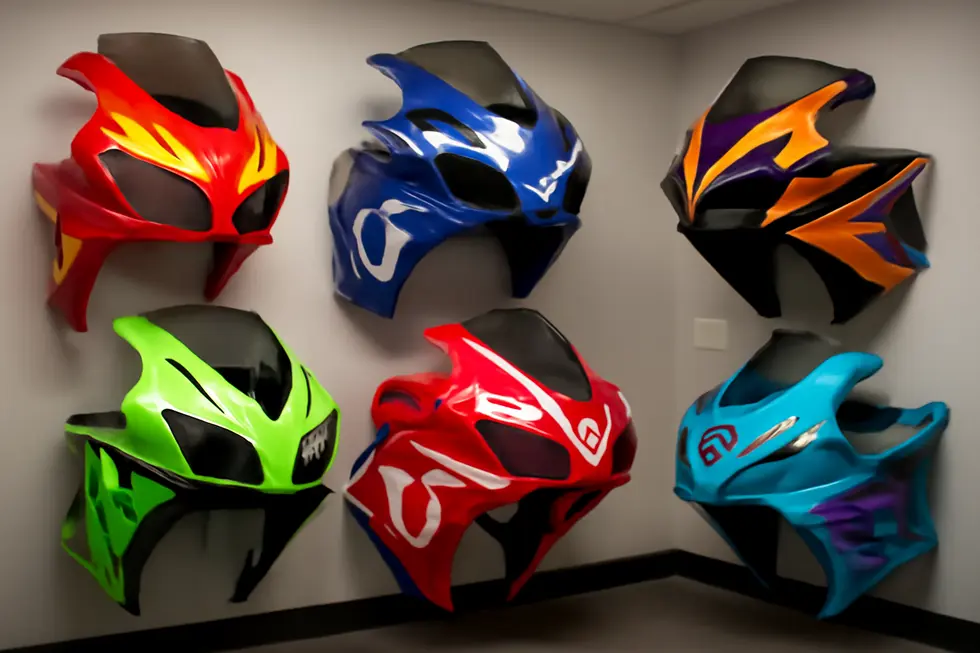
1. Crafting Performance and Style: Material and Finish Choices in Motorcycle Fairings
Customization in motorcycle fairing design is deeply rooted in the careful selection of materials and finishes, both of which profoundly affect performance, durability, and visual appeal. Among the most widely used materials, ABS plastic stands out for its excellent heat resistance, vibration damping, and impact strength. It typically serves as a versatile base for UV-resistant paints and high-gloss clear coats that protect against the elements and provide a polished look. Fiberglass fairings, crafted from polyester or epoxy resin, offer a flexible yet durable option favored for its easy repairability and cost-effectiveness. These require resin adhesives that maintain strong, lasting bonds despite stress and vibration on the road.
At the high-performance end, carbon fiber composites deliver unrivaled strength-to-weight ratios, making them a favorite for sportbikes and race-oriented builds. Their fabrication demands specialized epoxy adhesives to preserve their lightweight integrity and superior impact resistance. Injection-molded plastics, meanwhile, blend efficiency and precision in manufacturing, bonding best with cyanoacrylate or plastic-specific epoxies to produce smooth surfaces ideal for intricate designs or OEM-quality replacements.
Customization extends far beyond materials. Paint finishes can vary from radiant gloss to subtle matte, while custom graphics allow riders to express individuality or pay homage to classic race replicas. UV-resistant coatings and clear coats not only prolong aesthetic vibrancy but also shield against environmental wear. Precision in mold design and maintenance is critical—durable aluminum or steel molds ensure exact fits for every panel from compact side shields to sweeping front fairings with integrated windscreens.
High-impact acrylic blends with UV inhibitors are also integral to customizing windshields and touring fairings, offering both protection and superior clarity. These materials meet or surpass industry rigour for durability and rigidity, with polishing and protective options to match differing rider demands.
Ultimately, selecting the right combination of materials and finishes creates fairings that are more than bodywork—they become finely tuned components that enhance every ride with optimized strength, weight, style, and longevity. For those seeking further insight and tailored solutions, exploring comprehensive sources specialized in motorcycle fairing customization provides invaluable support and inspiration.
2. Tailoring Brand Identity and Functionality: The Seamless Fusion in Motorcycle Fairing Customization
Motorcycle fairing customization expertly balances the celebration of brand identity with purposeful functional enhancements, offering riders an opportunity to transform their bikes into true extensions of themselves. At its core, brand-specific customization ensures that fairings are crafted to fit precise models from prominent marques such as Honda, Yamaha, Kawasaki, Suzuki, and BMW. This strict adherence to fitment guarantees a seamless integration with the motorcycle’s frame, mounting points, and mechanical components, eliminating common installation challenges and preserving original handling characteristics. Beyond precise fit, the visual customization is vibrant and varied: riders can choose from a palette of finishes including gloss, matte, or UV-resistant coatings, each chosen not only to appeal aesthetically but also to endure the rigors of prolonged exposure to sun and weather. Graphics and decals expand customization possibilities further, ranging from meticulously replicated factory liveries to entirely personalized designs that showcase individual style or team branding.
Complementing these brand-driven options, functional customization attends to the fairing’s role in performance and rider experience. Aerodynamics remain central, with fairings shaped to streamline airflow, reduce drag, and stabilize the motorcycle at sustained speeds. Such refinements promote fuel efficiency while increasing rider safety and control, especially during aggressive riding or racing conditions. Protection through fairings is another priority—engineered panels shield the rider from wind buffeting, debris, and adverse weather, often crafted from durable materials like heat- and impact-resistant ABS plastic. However, functional customization also embraces cultural and stylistic nuances that sometimes prioritize bold expression over pure performance. For instance, subcultures favoring exaggerated and angular fairing styles accept increased drag in exchange for a distinctive visual statement and practical windbreaking benefits under typical road conditions.
The marketplace reflects these dual emphases, with suppliers offering full kits enabling complete aesthetic and functional overhauls tailored to emerging model trends and rider preferences. This comprehensive approach empowers motorcyclists to create exclusive builds for shows, personal use, or competitive riding, blending brand loyalty with bespoke adaptations. As customization grows in sophistication, it parallels the evolving dialogue between motorcycle engineering and individual creativity, crafting fairings that are as much about identity as about the ride itself.
For riders seeking a wide range of tailored options, exploring a diverse selection of customizable fairings at Summit Fairings offers an excellent starting point to match both style and functional needs.
Chapter 4: Fit and Functionality Considerations in Motorcycle Fairing Design
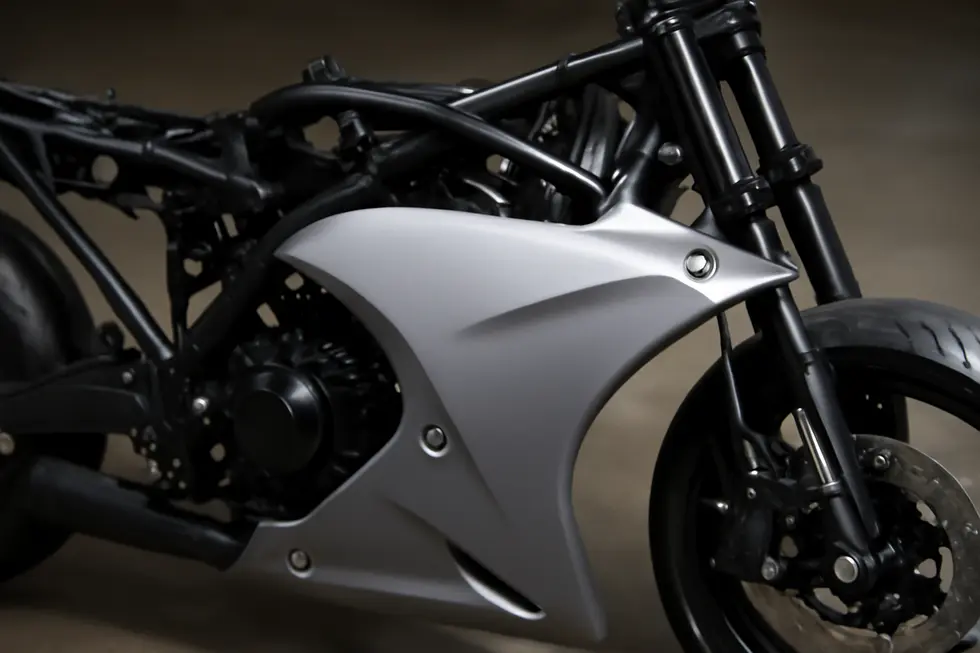
1. Integrating Aerodynamics and Rider-Centered Fit for Peak Performance and Safety
Motorcycle fairing design plays a critical role in balancing aerodynamic efficiency with precise fit and functional demands to optimize overall performance and rider safety. Achieving this balance requires a deep understanding of how airflow interacts with the motorcycle’s geometry, rider posture, and mechanical systems. Fairings must be sculpted to reduce drag and manage turbulent airflows while simultaneously accommodating the rider’s movement, visibility, and protection.
Aerodynamics in fairing design goes beyond simply minimizing frontal resistance; it includes shaping surfaces to generate downforce that increases tire grip during cornering and at high speeds. This is especially vital in race-oriented models where ground-effect technologies create low-pressure zones near the track surface, effectively pulling the bike downward to enhance stability without electronic interference. Such design elements must be seamlessly integrated, ensuring airflow remains smooth across the entire bike and rider profile. The interaction between rider ergonomics and aerodynamic form is key—fairings are crafted to shield the rider from windblast and debris while maintaining an unrestricted range of motion necessary for aggressive handling.
Performance fit in fairing design involves meticulous precision to ensure body panels align perfectly with the motorcycle frame, suspension, and fasteners. The fit must prevent unwanted vibrations or flexing that could compromise integrity or handling. Materials and adhesives are selected not only for lightness and strength but also for flexibility and weather resistance, enabling the fairings to endure mechanical stresses and environmental exposure without degradation. Functional durability extends to mounting procedures and the accessibility of key mechanical parts, allowing ease of maintenance without sacrificing aerodynamic continuity.
Additionally, design choices reflect differing rider priorities and cultural influences. While some motorcycles emphasize streamlined efficiency to maximize speed and stability, others may favor bold visual statements that prioritize style and practical protection, demonstrating that fit and functionality can be purposefully tailored rather than purely optimized for aerodynamics.
This nuanced approach to integrating aerodynamic shaping, rider-centric fit, and durable functionality ensures fairings contribute to superior handling, comfort, and safety across diverse riding conditions and styles. For those seeking tailored solutions that embody these principles, resources like the comprehensive offerings at Summit Fairings provide a valuable starting point to explore both performance-driven and customizable options.
2. Harmonizing Material, Construction, and Aesthetic Integration for Optimal Fairing Performance
Motorcycle fairings demand an intricate balance of materials, construction techniques, and aesthetic integration to deliver optimal fit and function. Selecting the right material shapes not only durability but also the weight and resilience of the fairing. Acrylonitrile Butadiene Styrene (ABS) plastic stands out as the preferred choice for many models due to its robust impact resistance, thermal stability, and vibration dampening capabilities. Beyond its technical merits, ABS is versatile in molding, allowing designers to achieve complex contours that complement the bike’s aerodynamic profile without compromising strength. Injection molding of ABS ensures consistent thickness and precision, resulting in components that can endure prolonged mechanical stress and environmental exposure, a vital factor for both original equipment and aftermarket fairings.
Construction methods play a vital role in how well a fairing integrates with the motorcycle’s frame and handling characteristics. For instance, mounting strategies differ widely: some fairings attach directly to the handlebars, moving with the rider’s steering input, while others are frame-mounted for rigidity and reduced wind buffeting. This distinction profoundly affects rider comfort and control. A handlebar-mounted fairing provides direct wind deflection but may increase steering effort, whereas frame-mounted designs enhance stability and reduce rider fatigue by isolating wind forces. Complementary structural elements, such as lightweight steel trellis frames paired with aluminum swingarms, further reinforce the fairing’s role in managing aerodynamic loads and maintaining balance at speed.
The aesthetic dimension is inseparable from functionality in well-designed fairings. Visual appeal emerges from a synthesis of aerodynamic efficiency and rider comfort, where design styles range from classic, sculptural forms to sleek, aggressive shapes engineered for reduced turbulence. Surface finishes such as glossy or matte UV-resistant coatings not only protect the underlying material but also enable personalization through graphics and colors that reflect rider identity or brand language. The shape and mounting configuration directly influence wind behavior, crosswind stability, and steering feedback—critical factors for rider confidence and long-distance comfort.
Successful motorcycle fairing design thus requires a holistic approach, intertwining material science, precise manufacturing, and purposeful aesthetics. By optimizing these elements together, designers can craft fairings that enhance performance, deliver lasting durability, and embody the rider’s style. For those seeking extensive options and custom solutions, exploring premium fairing selections at trusted sources offers a pathway to tailored fit and elevated function.
Chapter 5: Exploring the Diverse Technological Foundations of Motorcycle Fairing Variants
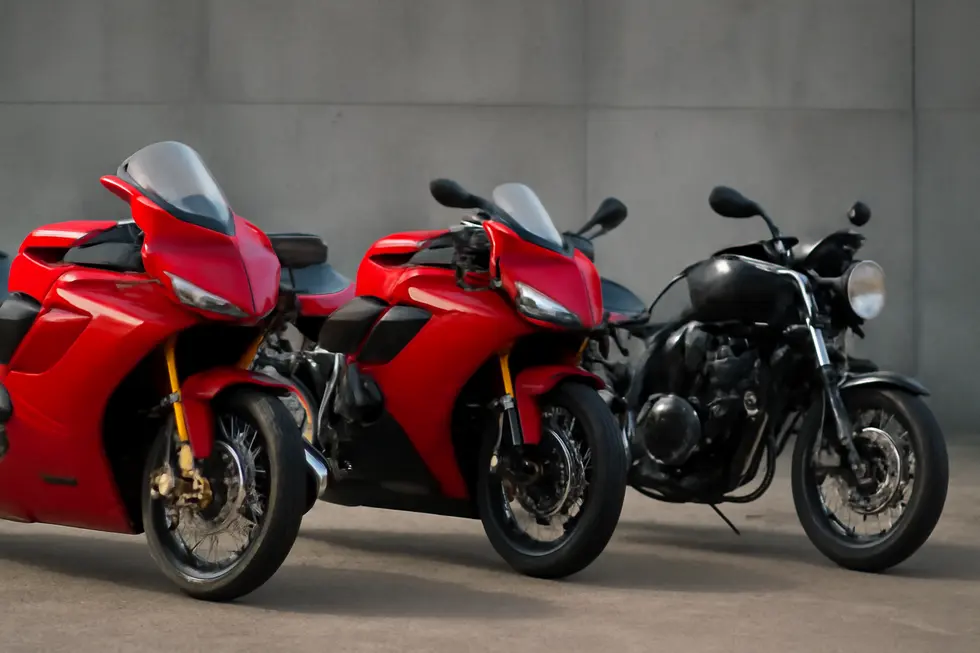
1. Innovations and Material Science Driving the Broad Spectrum of Motorcycle Fairing Designs
Motorcycle fairing design unites advanced technology and creative expression to meet varied rider needs. Central to this are the aerodynamic considerations that guide the shape and structure of fairings across different variants. High-performance race fairings embody cutting-edge aerodynamic engineering, featuring sharp, flowing contours that minimize air resistance and turbulence. These shapes enhance stability and handling at high speeds while improving fuel efficiency. For instance, sport motorcycles adopt streamlined fairings tailored to direct airflow efficiently around both the bike and rider, refining comfort and performance on extended rides. Simultaneously, carbon fiber integration often reduces weight without sacrificing strength, pushing the boundaries of agility and acceleration.
Material technology is equally pivotal. Fairings are crafted from composites like fiberglass, Kevlar-carbon blends, and ABS plastic, each chosen for their unique balance of durability, weight savings, and flexibility. The careful selection and combination of these materials ensure that fairings withstand environmental stresses and mechanical forces encountered during riding. Notably, race fairings require materials capable of absorbing impacts while remaining lightweight to optimize speed. This interplay of material performance and aerodynamics profoundly influences how different fairing types perform under varying conditions.
Emerging innovations in adhesives and repair techniques further complement material advancements. Modern bonding solutions employ polymer-based adhesives enhanced with nanotechnology, offering superior resistance against UV exposure, moisture, and temperature fluctuations. These adhesives maintain elasticity to endure vibrations and flexing, crucial for preserving the integrity of intricate carbon fiber and fiberglass assemblies. Such technology enables easier customization and repair, extending the lifespan of fairings and supporting their functional and aesthetic roles.
Beyond engineering, cultural influences shape fairing designs that prioritize identity and style over aerodynamic efficiency. The Bosozoku subculture, for example, embraces dramatically oversized, angular fairings that serve as bold visual statements. These designs emphasize rebellious aesthetics and social symbolism, diverging from traditional functional goals. While still providing some rider protection, their purpose is chiefly expressive, illustrating the diverse motivations behind fairing variations.
Together, these technological and cultural facets illustrate the complexity and versatility of motorcycle fairing design. From precision-engineered, lightweight composites optimized for race conditions to striking artistic forms that resonate with cultural values, every variant reflects a distinct balance of innovation and intent. For riders seeking both performance and personalization, exploring this breadth can uncover fairings that harmonize technical excellence with individual style, as showcased in a variety of expertly crafted kits found at reliable motorcycle fairing sources.
2. The Economic and Societal Dimensions Shaping Motorcycle Fairing Variants
Motorcycle fairing designs transcend their physical presence, deeply influencing economic landscapes and societal dynamics within the motorcycling world. The selection of materials—ranging from cost-effective ABS plastics to premium carbon fiber composites—directly affects production expenses and retail pricing. Lightweight yet durable composites elevate performance but also raise manufacturing costs, positioning certain fairings at the higher end of the market spectrum. This cost variance informs how manufacturers segment markets, targeting distinct rider profiles: sporty, aerodynamic fairings appeal to performance enthusiasts eager to invest upfront for speed and style, while touring variants emphasize wind protection and comfort, catering to long-distance riders valuing durability and weather resistance.
Such segmentation extends beyond sales figures, impacting insurance classifications and ownership costs. Sportbike fairings, often paired with high-powered motorcycles, tend to drive insurance premiums upward due to increased accident risk perceptions. This economic ripple effect influences buyer decisions and accessibility within different market segments.
Beyond factory production, the customization market thrives as riders seek personal expression through unique fairing designs. This burgeoning niche economy supports small businesses and fosters vibrant enthusiast communities, contributing to a continual cycle of innovation and cultural identity. Fairings, in this light, become more than aerodynamic panels; they represent symbols of lifestyle, affiliation, and artistry.
Societal considerations also steer fairing design evolution. Safety enhancements embedded in innovative fairings reduce rider fatigue and offer crucial protection from environmental elements, reflecting a growing prioritization of rider well-being. Environmental consciousness drives suppliers toward sustainable materials and green manufacturing processes, including eco-friendly adhesives, aligning motorcycle production with global ecological concerns.
Regulatory frameworks, such as stringent emissions standards, indirectly influence fairing design by dictating changes in motorcycle performance and classification. As engines evolve to comply, corresponding aerodynamic adjustments in fairings maintain efficiency and style while adhering to legal mandates.
Ultimately, motorcycle fairing variants are shaped by a complex interplay of economic incentives and societal demands. These forces drive manufacturers to innovate continuously, balancing cost, performance, safety, environmental responsibility, and cultural resonance. For those seeking deeper insights into environmentally conscious manufacturing in fairing design, exploring sustainable options at Summit Fairings offers a comprehensive perspective on balancing performance with ecological responsibility.
Final thoughts
For business owners operating in the motorcycle accessories space, mastering the intricacies of fairing design offers a competitive edge. From aerodynamic precision that enhances riding dynamics to material choices balancing durability and weight, every decision shapes the end product’s quality and appeal. Customization fosters strong brand identity and customer loyalty, while exact fitment ensures functionality and user satisfaction. Understanding the array of fairing types enables alignment with customer needs—from high-performance racers to casual road riders. Altogether, a holistic approach to motorcycle fairing design not only drives product excellence but also generates growth opportunities by responding to market demands with innovation and craftsmanship.
Ready to elevate your ride? Summit Fairings delivers premium, custom-fit fairings that blend style and durability. Whether you’re chasing speed or turning heads, we’ve got your bike covered. Don’t wait—transform your machine today. Click, customize, and ride with confidence. Your perfect fairing is just a few clicks away. Act now!
About us
undefined
RELATED POSTS
View all

